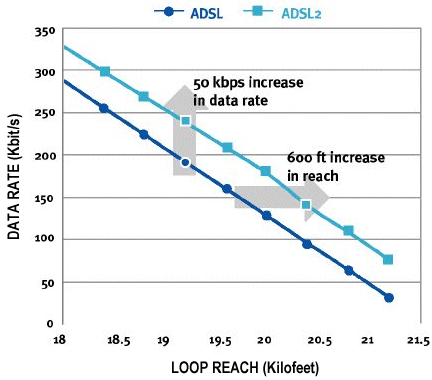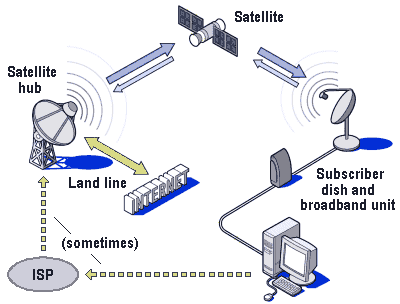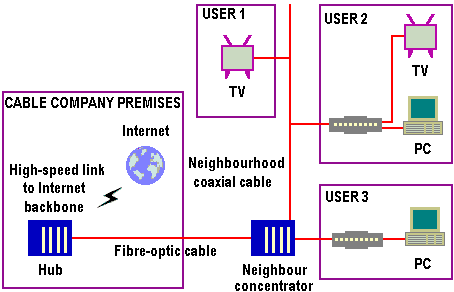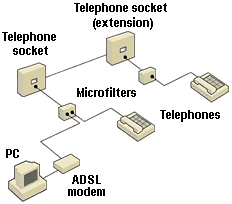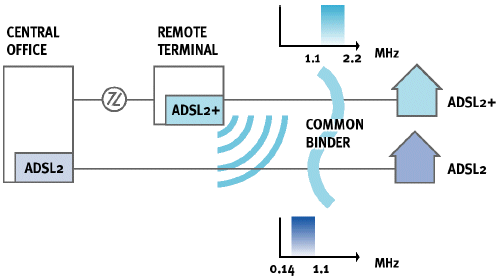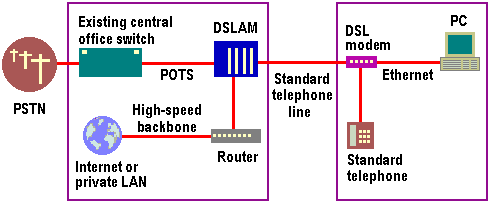Even before designs based on the first generation standards (ITU G.992.1 and G.992.2) had been perfected, the ITU had been working on a latter revisions of the ADSL standard. In July 2002, the ITU completed two new ADSL standards - designated as … [Read more...]
A Description and Explanation of Satellite Broadband and How It Works
Whilst the advent of its RADSL variant may have increased the range of ADSL from 3.5km to 5.5km, the fact is that the technology will always be literally beyond the range of many living in rural areas. In theory, satellite communications can … [Read more...]
Cable Modems – for cable Internet connections
Cable modems offer the prospect of fast and affordable Internet access by leveraging existing broadband cable TV networks. The technology is more applicable to home than business users since it is residential areas that are more likely to be wired for cable. The devices, manufactured by such … [Read more...]
Wires-Only ADSL – Asymmetrical Digital Subscriber Line
Wires-only was one of the first of many BT initiatives during 2002 designed to kickstart the adoption of broadband, appearing on a wholesale basis at the start of the year and reaching consumers via ISPs over the following months. Also referred to as self-install - because there is no need … [Read more...]
ADSL Implimentation
In the UK, BT (British Telecom) commenced pilot trials of its ADSL technology - in north and west London - in late 1998. Early the following year, the company announced that it planned to spend £250m upgrading 400 local exchanges - out of … [Read more...]
xDSL Variants
RADSL, like ADSL, operates faster in one direction than in the other and has the same transmission limits as ADSL. But as its name suggests, it adjusts transmission speed according to the length and quality of the local line. Connection speed is … [Read more...]
ADSL2+ | ADSL2Plus | ITU G.992.5
ADSL2+ reached consent at the ITU in January 2003, joining the ADSL2 standards family as G.992.5. The ADSL2+ recommendation doubles the downstream bandwidth, thereby increasing the downstream data rate on telephone lines shorter than about 5,000 feet. While the first two members of the … [Read more...]
Glite
During 1997 a number of companies were independently working on versions of splitterless DSL. The theory behind splitterless DSL is that it requires no technician to come to your house to install it, making the technology easier to install … [Read more...]
An Overview of ADSL – What It Is and How It Works
ADSL has several similarities to ISDN. Both technologies require that copper phone lines be electrically clean and both can operate only a limited distance away from the phone company's local exchange. In most cases, ADSL can operate over … [Read more...]
xDSL Digital Subscriber Line technologies – ADSL, HDSL, VDSL
xDSL is a catchall name for a variety of DSL (Digital Subscriber Line) technologies developed to offer phone companies a way into the cable TV business. It isn't a new idea; Bell Communications Research Inc. developed the first DSL back in 1987 to deliver video on demand and interactive TV … [Read more...]
